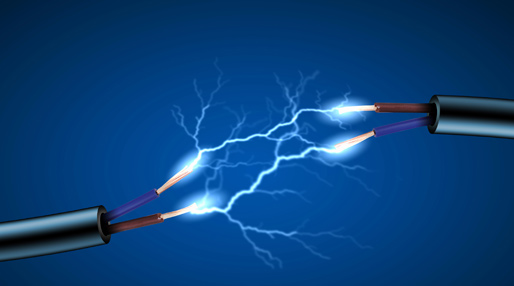
Qu’est ce que l’électricité ?
- base de l’électricité http://www.flossmanualsfr.net/arduino/ch008_les-bases-de-lelectronique
- Loi d’Ohm http://fr.wikipedia.org/wiki/Loi_d’Ohm
- basiques physiques de l’électricité: http://www.tigoe.com/pcomp/code/circuits/understanding-electricity/
Exemples de composants
- capteurs analogiques / numériques ( http://www.kobakant.at/DIY/ , )
- junk, circuit bending ( http://www.flickr.com/photos/jeanbaptisteparis/2182473307/in/photostream/ ) >>> informatique ensad
- solenoides ( http://www.flickr.com/photos/jeanbaptisteparis/2604580166/in/photostream/ & )
- Speaker papier (https://www.youtube.com/watch?v=y1F5Gg4bG3o) plusea
- Speaker tissu (http://www.kobakant.at/DIY/?p=2936)
Electricity
is the flow of electrical energy through some conductive material.
Current
is a measure of the magnitude of the flow of electrons in a circuit. It is measured in Amperes. Using water flow as an analogy, current would be how much water (or electricity) is flowing past a certain point. The higher the amperage, the more water (or electricity) is flowing.
Voltage
is a measure of the electrical energy of a circuit. It is measured in Volts. In the water analogy, voltage would be the water pressure.
Resistance
is a measure of a material’s ability to oppose the flow of electricity. It is measured in Ohms. A sponge in the pipe would act as a resistor, limiting the current (and the voltage) flowing through the pipe.